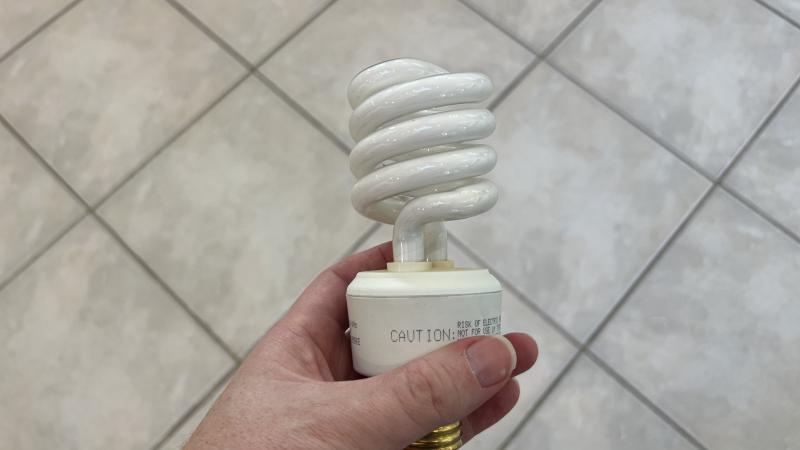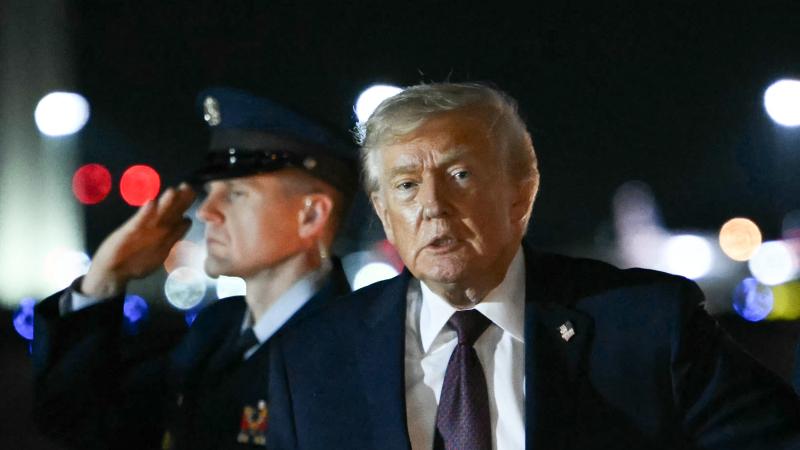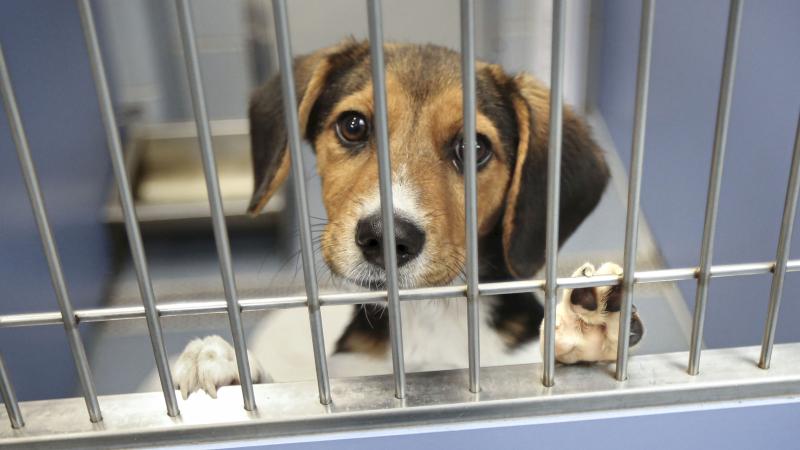Effect of EV mandates could mean drivers will wait an hour to charge their cars, research shows
The Biden administration's EV mandates will create such a large demand for charging that, to avoid hour-long wait times for EV owners, an additional 166,000 fast DC charging stations will need to be built for a cost of $3.4 billion.
In the next decade, electric vehicle owners may find themselves waiting up to an hour to get a chance to charge their cars, unless the number of DC fast charging stations increases five-fold by 2050.
New research by the Energy Policy Research Foundation (EPRINC), a nonpartisan, not-for profit think tank founded in 1944, finds that the United States' charging infrastructure will have to expand greatly to satisfy projected demand that will arise from all the electric vehicles that automakers will be required to produce under the recently finalized Corporate Average Fuel Economy (CAFE) standards.
The National Highway Traffic Safety Administration’s (NHTSA) CAFE standards were finalized in June, and they limit the amount of carbon dioxide a vehicle can emit per mile. Together with the Environmental Protection Agency’s tailpipe standards, which were finalized in March, the Biden administration is attempting to pressure automakers to transition their lines to EVs.
Anticipating the final CAFE standards, a dozen Republican lawmakers in January wrote to NHTSA Deputy Administrator Sophie Shulman saying the rules “amount to a de facto mandate for electric vehicles that threatens to raise costs and restrict consumer choice, harm U.S. businesses, degrade our energy and national security and hand the keys of our automotive industry over to our adversaries, especially China.”
Driving EV adoption
The CAFE standards are calculated by a production-weighted average of mileage ratings across a manufacturer's fleet, so compliance will be determined by the emissions of all the various models an automaker produces.
EPRINC research shows that the emission levels of popular vehicle models currently on the market will far exceed CAFE’s 2032 limits. Some of the models, such as the Toyota Camry, produce more than double the amount of emissions that will be allowed in 2032. The same is true for the Nissan Rogue and Toyota RAV 4 — both SUVs.
Matthew Sawoski, senior energy and national security research analyst for EPRINC, told Just the News that it’s essentially impossible for automakers to meet the standards without making a large portion of their production lines electric.
Hybrids, which combine aspects of EVs and gas-powered engines, can help, Sawoski said, and a lot of automakers are preparing to meet the standards with those included. Gas-powered cars, also called internal combustion engine vehicles (ICEVs), are not in compliance with the standards when 100% gas-powered.
By making these standards much more stringent for ICEVs, the CAFE standards make the gain from hybrids less. “So you could have a fleet without any EVs, but they’d essentially have to be all hybrids. You could not have hardly any ICEVs in there,” Sawoski said.
If automakers fail to meet the standards, they will have to pay hundreds of millions of dollars in fines.
The problem for some automakers is their EV lines are losing money, and the revenues coming from their gas-powered vehicle lines are keeping them in the black. For example, Ford lost $132,000 on each electric vehicle it sold in the first quarter of this year, but the company posted a net income of $1.3 billion because its gas-powered and hybrid vehicles brought in enough revenues to cover the losses from its electric lines.
Trying to meet the CAFE standards with hybrids, Sawoski said, will limit the number of gas-powered vehicles the automaker can sell. “If you could only use hybrids, you'd have to have a much, much higher proportion of hybrids, with a very minimal amount of gasoline vehicles, if at all,” he said.
Sawoski added that the emissions data on hybrids isn’t as widely available, so the estimates are not as easy to calculate.
Charging wall
The CAFE standards effectively mean that most automakers will produce many electric vehicles. There’s a lot of uncertainty as to how that plays out on America’s roadways. Over 5,000 dealerships have signed onto a campaign to urge President Joe Biden to pull back on the EV mandates because they weren’t selling the electric vehicles that were filling up their lots.
A global survey released last month found that half of all EV owners are thinking they’ll switch back to gas-powered vehicles with their next purchase, and the main reason was a lack of adequate charging infrastructure.
Assuming the EVs automakers produce get sold, the number of Level 3 DC fast charging stations, according to the EPRINC research, will need to grow by 166,000 chargers by 2050. Without that growth, the average wait times will rise to over an hour. The estimated cost of these additional chargers is $3.4 billion.
Even under a scenario where these charging stations are built to keep the average time under an hour, according to the EPRINC research, 15% of stations will experience wait times of over an hour, and 3% will experience wait times over over two hours.
In estimating the charger costs, EPRINC researchers used the minimum cost without consideration of possible other issues, such as supply chains and inflation, which could impact the cost of deploying the chargers needed. These will likely drive the cost up much higher.
“The three and a half billion is a severe underestimate,” Sawoski said.
In 2021, the Biden administration allocated $7.5 billion for charging station infrastructure, but as of April, only about eight stations had come online. Those stations are a mix of the fast charging stations and slower Level 2 stations, which may not reduce wait times in the coming years like fast chargers.
Robust Tesla
Tim Portman, an HVAC contractor and owner of Ohio-based Portman Mech, drives a Tesla and said the vehicle is great for all his driving needs. He’s able to charge at home, but when he goes on road trips, he uses public charging stations.
“I personally never had to wait for a charger,” Portman said, adding that charge times are somewhere between 15 and 35 minutes.
The Tesla apps, he said, tell him exactly where the charging stations are, how much of a charge he’ll have left — which estimate on the conservative side — and how many other drivers are enroute to the same station. Not all EV types can use Tesla charging stations.
Currently, most buyers are choosing to drive EVs and have home charging options. A February survey found that 86% of EV owners charge at home. Should the CAFE standards push people who don’t have that option into EVs, demands on public charging stations will increase.
While home charging is available for anyone with a 110 volt standard AC outlet, these low-power "Level 1" chargers may take as long as 26 hours to fully charge a vehicle.
“For the next couple of years, there’s a comfortable cushion. We're relatively well positioned right now. However, the problem is that new rules are going to mandate potentially exponential growth in this. And whenever you're mandating exponential growth, that becomes very dangerous. Because if anything goes wrong, lots of things can go wrong,” Sawoski said.
Portman said that Tesla has a very robust charging network, but as more manufacturers put their EV lines on the road, he’s concerned they may not have as reliable networks.
This research into the impacts of CAFE standards is part of a larger report coming this month titled "The Energy Economics of EVs and ICEVs: a Comprehensive Analysis." Sawoski said the report shows that electric vehicles and internal combustion engine vehicles are very different technologies. They work very differently. The CAFE standards, he said, will require a lot of home charging to adequately satisfy charging demand, and many people don’t have home charging options.
There are many other potential problems that could arise as a result of exponential growth in EV adoption, such as strains to the electricity grid. It’s possible that in periods of high demand, Sawoski said, when utilities are looking to reduce loads on the grid, they may cut off charging stations.
“Some of these charging stations might be unusable,” Sawoski said.
It’s not clear if the Biden administration is considering all these problems in its push to reduce emissions in the transportation sector. Environmental Protection Agency (EPA) Administrator Michael Regan told the House Oversight and Accountability Committee earlier this month that there is no EV mandate and noted that the EPA’s tailpipe standards allow for a mix of technologies, including hybrids.
While that’s true, research is showing that most automakers will have to greatly expand their EV lines to meet the Biden administration’s emission limits. U.S. car buyers might not be well prepared for that.
The Facts Inside Our Reporter's Notebook
Links
- New research
- EPRINC
- CAFE standards were finalized in June
- tailpipe standards
- amount to a de facto mandate for electric vehicles
- EPRINC research shows
- Toyota Camry
- Nissan Rogue
- Toyota RAV 4
- Ford lost $132,000 on each electric vehicle it sold
- signed onto a campaign
- global survey released last month
- eight stations had come online
- Portman Mech
- such as strains to the electricity grid
- there is no EV mandate
















